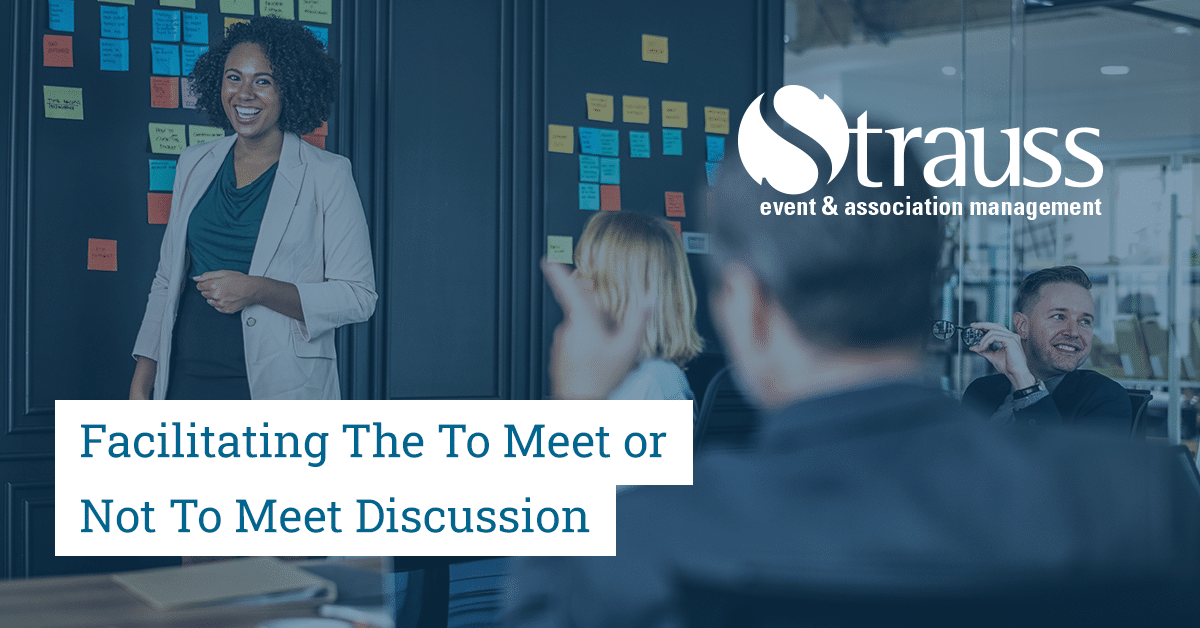Building on my July 2024 blog, To Meet or Not to Meet. That is the Question, let’s explore a process your Board can use for a meaningful discussion on this topic.
Recently a client talked about their annual conference (or do you mean AGM?) and felt overwhelmed by all the factors to consider to make an informed decision on the future of the meeting. A process was needed along with a set of key questions to focus the discussion.
Below is a list of ideal questions to ask when deciding on the future of an AGM and continuing education:
- What is the current attendance trend for the annual conference and how does it compare to previous years?
- Are there any new developments in the industry that may require changes to the format or content of the conference?
- How are we measuring the conference’s success and what changes can be made to improve attendance and satisfaction?
- How does the conference cost compare to other industry events and is it providing enough value to attendees to justify the cost?
- Are there any emerging technologies or trends to consider incorporating into the conference to stay competitive and provide a better experience for attendees?
Asking these questions will help the Board evaluate the current state of the annual conference and identify areas for possible improvement.
In addition to the above-mentioned questions, the Board may also want to consider these questions, as well:
- What are the key objectives of the annual conference and how do they align with the organization’s strategic goals?
- How does the annual conference fit into the organization’s overall budget and financial strategy?
- How does the annual conference support and align with the organization’s mission and values?
- What are the key challenges facing the annual conference and how can they be addressed?
- How can the Board work with management to ensure the continued success and growth of the annual conference in the future?
Asking these questions can help the Board gain a more comprehensive understanding of the annual conference and its role within the organization. By evaluating the conference from various angles, the Board can identify potential issues and opportunities, and work with management to ensure the conference remains a valuable and effective tool for achieving the organization’s objectives.
The Meeting / Meetings Discussing Conference Viability
Structuring a meeting to discuss the future of an annual conference involves careful planning and organization to ensure that the discussion is productive and leads to actionable outcomes.
Here’s a suggested structure for such a meeting:
1. Pre-Meeting Preparation
- Distribute Pre-Read Materials: Send out any relevant data, feedback summaries from previous conferences, and strategic documents related to the conference’s future. This ensures that all members come prepared.
- Survey for Topics: Consider sending a brief survey to gather input on specific topics or concerns members would like to address regarding the conference’s future.
2. Meeting Agenda
- Welcome and Objectives (5 minutes): Start with a brief welcome, review the meeting’s objectives, and outline the agenda to set the tone.
- Review of Previous Conferences (15 minutes): Discuss what worked well and areas for improvement based on data and feedback from past events.
- Strategic Discussion (30 minutes): Break down the discussion into key strategic areas such as audience engagement, technology integration, content and programming, sponsorship and financial models, and marketing strategies.
- Breakout Sessions (30 minutes): Divide into smaller groups to tackle specific topics in-depth. Each group can focus on generating ideas and solutions for a particular aspect of the conference.
- Regroup and Share Insights (15 minutes): Come back together as a full group to share insights and ideas from the breakout sessions.
- Action Planning (20 minutes): Identify key initiatives and assign responsibilities. Set timelines and next steps for each action item.
- Wrap-Up and Feedback (5 minutes): Conclude the meeting with a summary of decisions made and gather immediate feedback on the meeting’s effectiveness.
3. Roles and Responsibilities
- Facilitator: Designate a meeting facilitator to guide the discussion, keep time, and ensure that all voices are heard.
- Note-Taker: Assign someone to take detailed notes, especially on decisions made and action items.
- Breakout Session Leaders: Identify leaders for each breakout session to steer discussions and report back to the larger group.
4. Post-Meeting Follow-Up
- Distribute Meeting Minutes: Share a summary of the meeting, including decisions, action items, and assigned responsibilities, with all participants.
- Set Up Check-Ins: Schedule follow-up meetings or check-ins to monitor progress on action items and adjust plans as necessary.
By following this structured approach, you can ensure that your meeting is focused and productive and leads to clear outcomes that will help shape the future of your annual conference.
Asking questions and structuring the discussion around the annual conference will allow Board volunteers to focus the discussion. It is important to realize that the Board might not have a lot of experience in making these types of decisions so providing them with tools and a structure to help the discussion, will be crucial.

